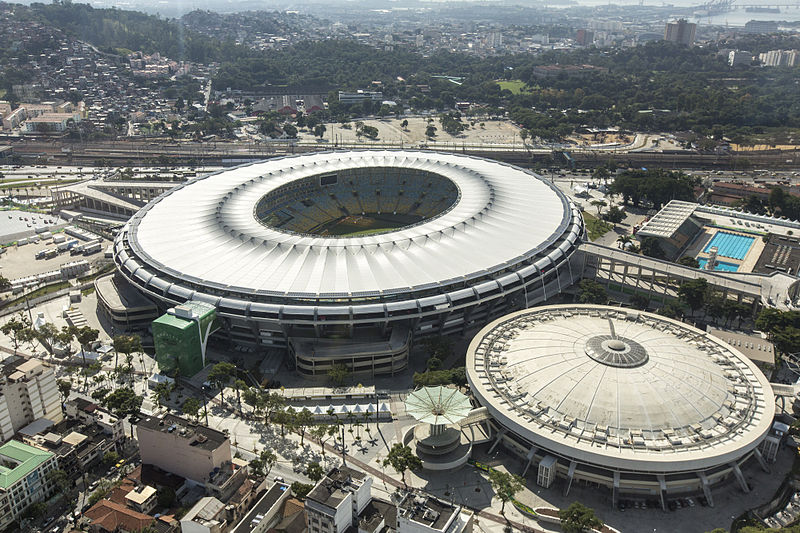One lovely benefit of Brazil hosting the 2014 World Cup: the billion-plus dollars spent on stadium upgrades included a renovation of Maracana, one of the most historic venues in soccer.
Maracana was built to host the 1950 World Cup, and it was built as a shrine to soccer, able to hold up to 200,000 screaming fans — a force of nature that couldn’t be ignored. And while Brazil lost that 1950 World Cup final to Uruguay, 2-1, the match firmly established Maracana (technically, Estadio Jornalista Mario Filho) as the center of soccer in soccer-loving Brazil.
For the World Cup, Maracana was renovated once again, this time to include more comfortable seating, modern amenities, and some multimedia features:
During the nearly three-year renovation, the historic facade — it was named a cultural heritage site by the National Institute of Historic and Artistic Heritage — remained the same. But the interior got a complete remodeling and a new roof made of fiberglass and Teflon that protects 95 percent of the stadium’s seats was added. A snazzy LED-lighting system can project 110 colors on the roof.
In the old days when there were bench seats, Maracana could easily accommodate more than 100,000 fans. And during the 1950 World Cup, nearly 174,000 paying fans and others who pushed their way into the stadium for free sent the attendance soaring to around 200,000….
In the most recent renovation, capacity was taken down to 78,000 and more exits were added to comply with FIFA requirements. There’s a new operations center where images generated by 360 cameras placed around the arena are monitored on a video wall.
The renovated stadium includes an air-conditioned VIP area, green technology (half the water needed for field use is recycled rainwater) and 60 points of sale with food and drink.

